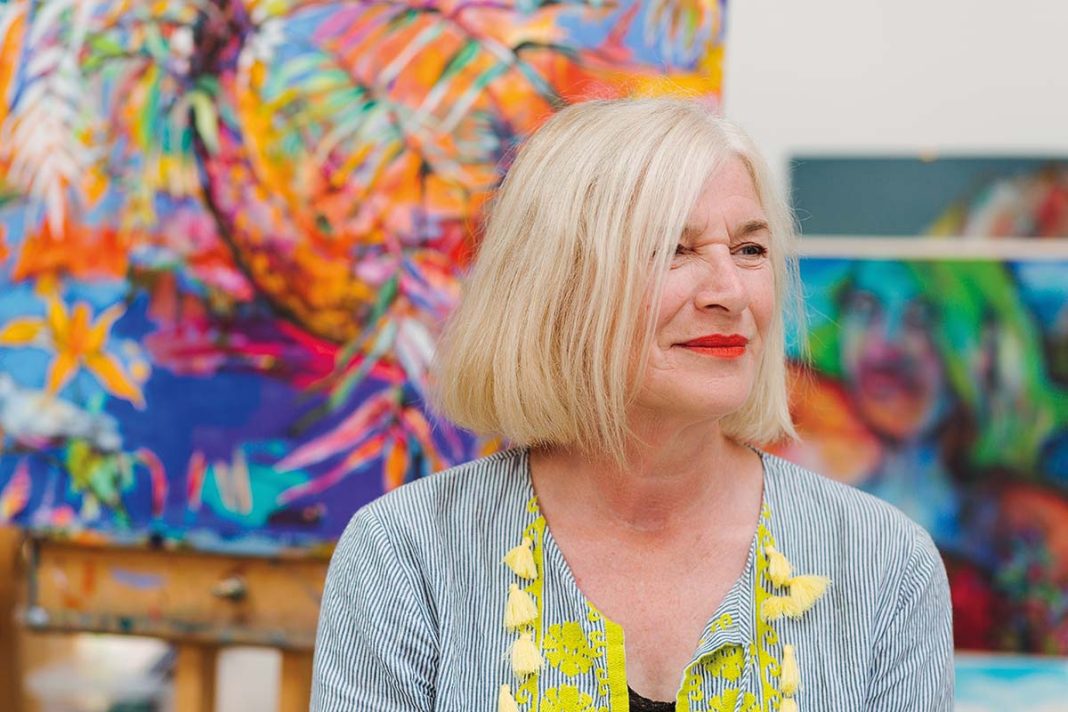Colour bursts from the acclaimed artist Rosemary Beaton’s canvases and fills her home and garden in Renfrewshire
It’s the hottest day of the year, but even in an Arctic tundra I’d be warmed by the exuberant scene before me. Sunlight streams through the glass doors of the artist’s studio, skipping generously across her acid-bright landscape paintings.
Canvases ripe with colour climb the walls and perch on easels; fuchsia-drenched hills and lush lime-green plants wink from every corner. On a table, wrinkled paint tubes congregate around rainbow-stained palettes.
Amid the riot of colour sits Rosemary Beaton, a vision with a tangerine-lipstick smile. Beaton, one of Scotland’s most important artists (though I suspect she’s too modest to admit it), has always known how to brighten a room.
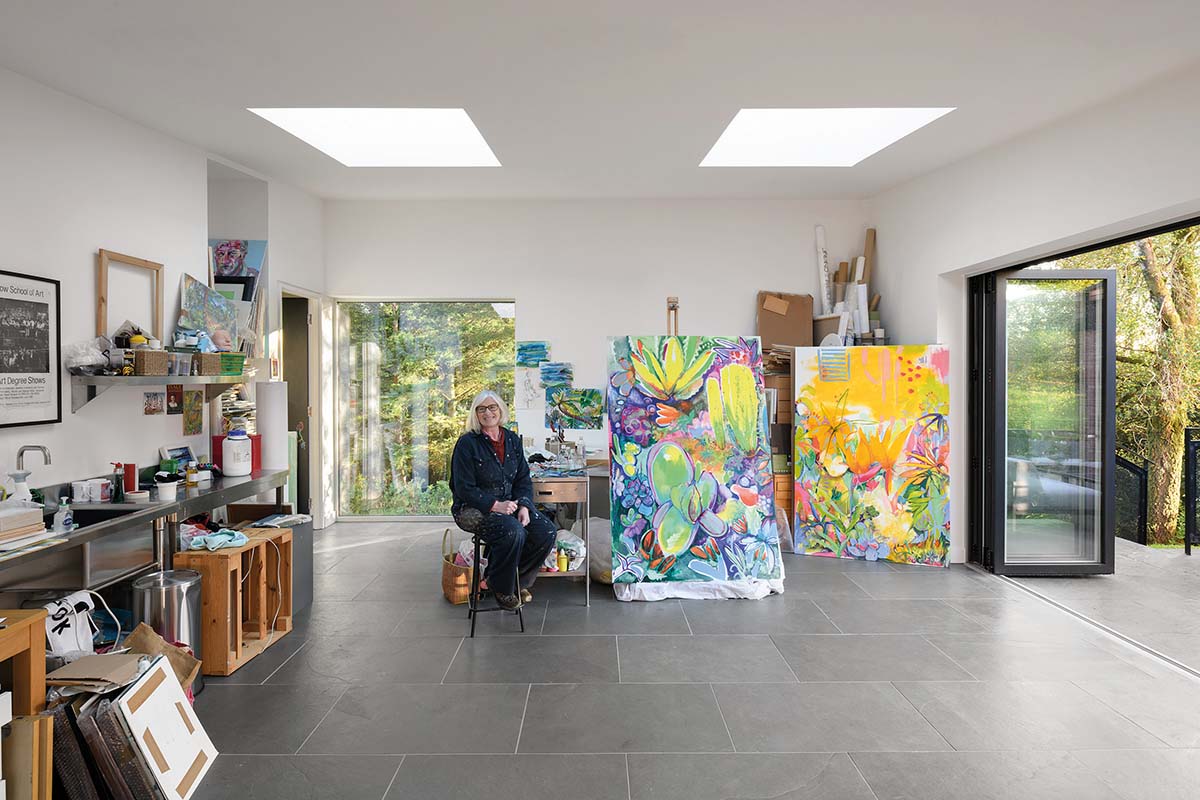
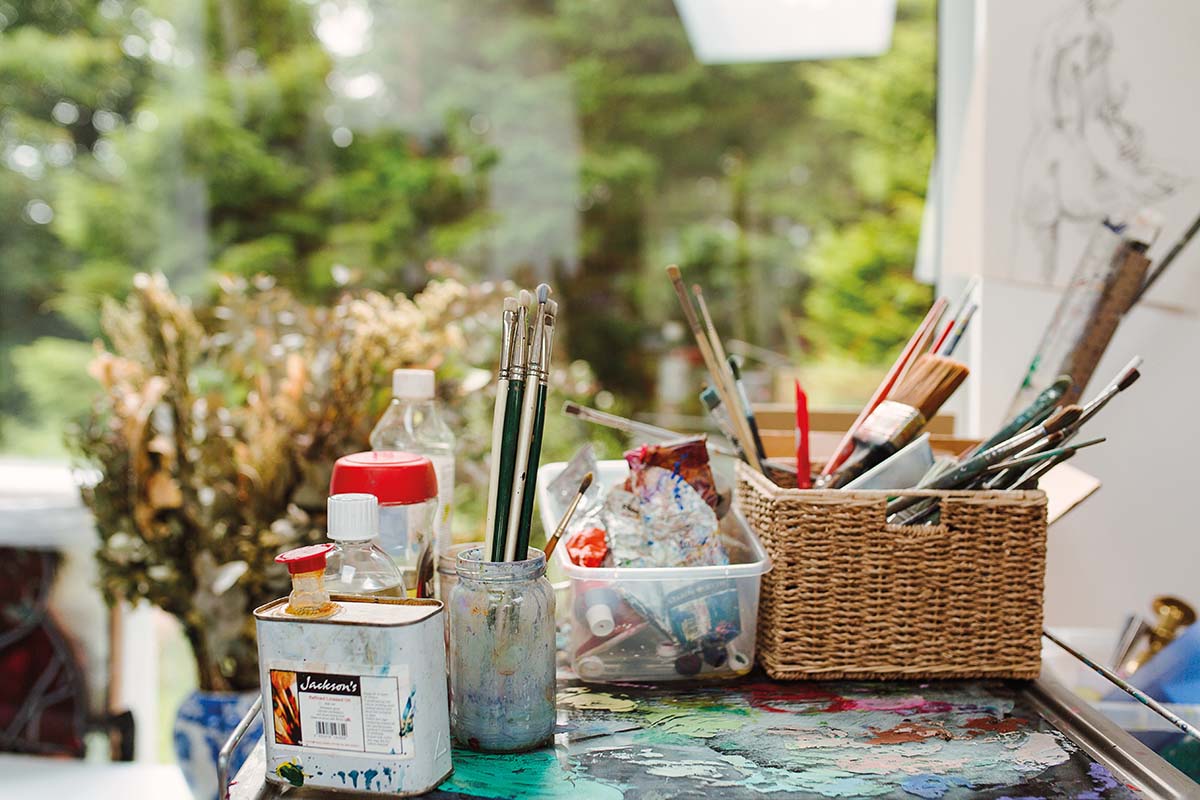
As a young student of the Glasgow School of Art in the 1980s, she was part of a second wave of female artists dubbed the ‘Glasgow Girls’ who enjoyed critical acclaim for their bold, expressive work.
“We had the artists Steven Campbell, Adrian Wiszniewski and Ken Currie a few years above us, who painted big, bold canvases and set the path for women in my year to push forward on the art scene,” she remembers.
“We were quieter, and perhaps a bit more poetic, but the energy we got from them was really inspiring.”
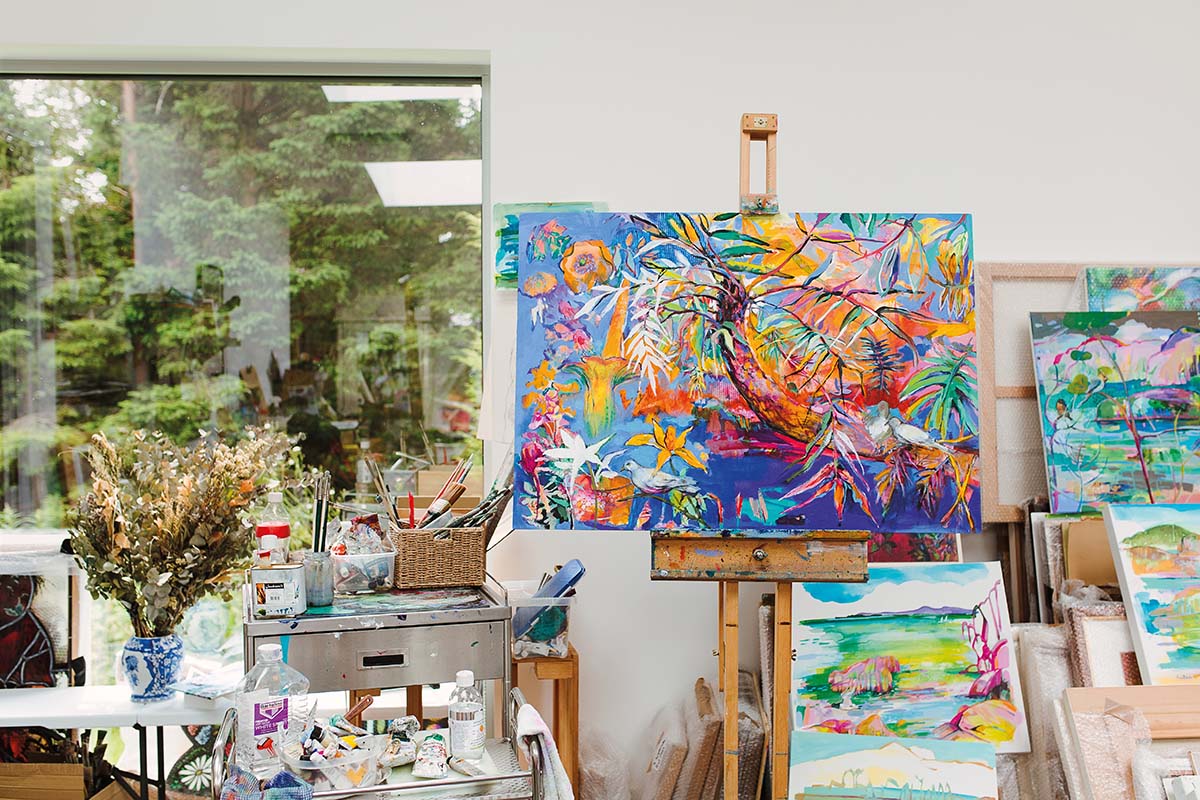
Not that she necessarily needed it. In 1984, aged twenty, Beaton became the first Scot and the youngest person to receive the John Player National Portrait Award. Even then, her style was distinctive.
In the winning painting, her husband Paul Doherty (they met while at school; she lived in
Bishopton, he in Langbank), reclines on a chair in a cherry-red room, a jolly green cheese plant peering over his shoulder. “At that time, there weren’t very many artists using colour at all,” she remembers.
“Everything was dreich and heavy. Muddy palettes were the ‘in’ thing, whereas I preferred the clarity of pure colour.”
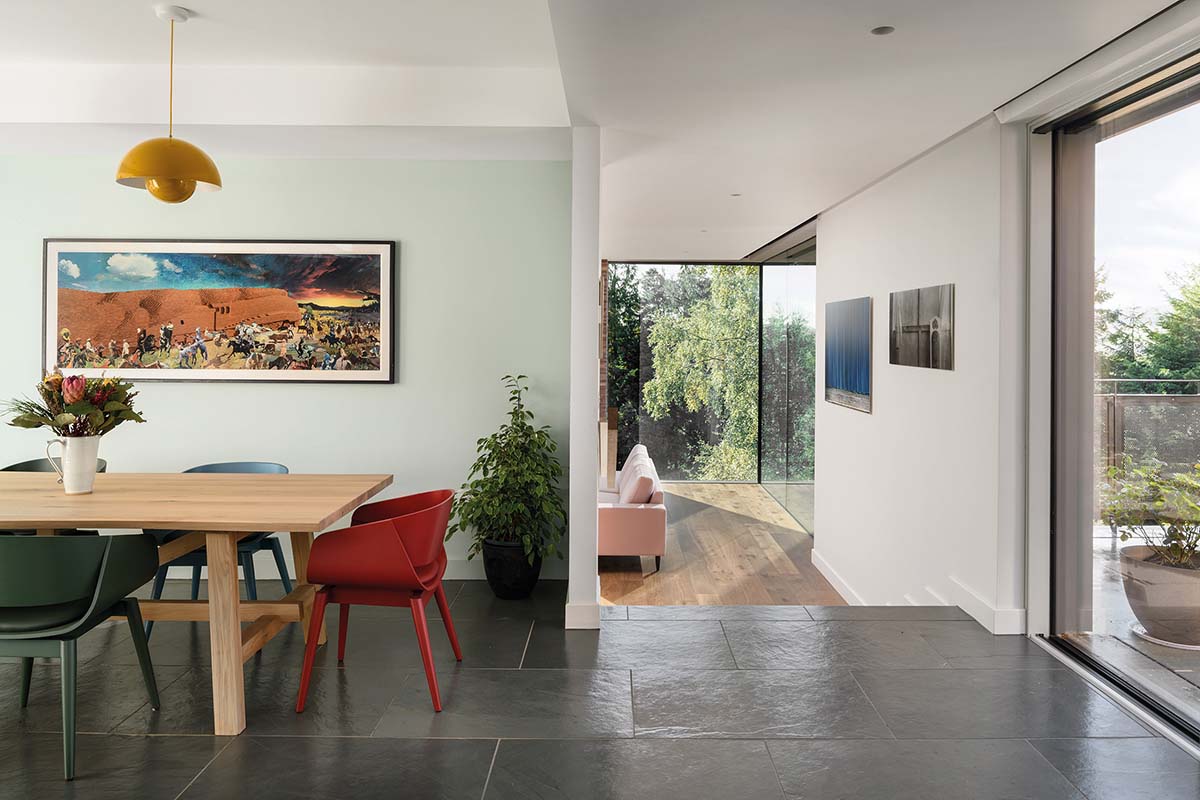
The artist’s home in Kilmacolm, which she shares with Paul, reflects her colourful sensibilities. Sited on a plot of woodland on the fringes of the village, the Pond House was designed by architect Jamie Ross of Technique Studio to allow the intermingling of nature and art.
The bedroom is the colour of limoncello, but takes on the complexion of a pear during the
day when the sun shines through the trees by the window. Mustard pendant lights and a yolky-yellow island pop against a dusty-teal feature wall in the kitchen; in the sitting room,
another single-colour wall, this time an intense candy-pink, echoes the rhododendrons in the garden below.
But white space is plentiful too. “It’s maybe a wee bit old-fashioned to go for mostly white with just one colour picked out for a wall, but it suits the artwork,” says Beaton, whose exquisite, vibrant paintings adorn every room.
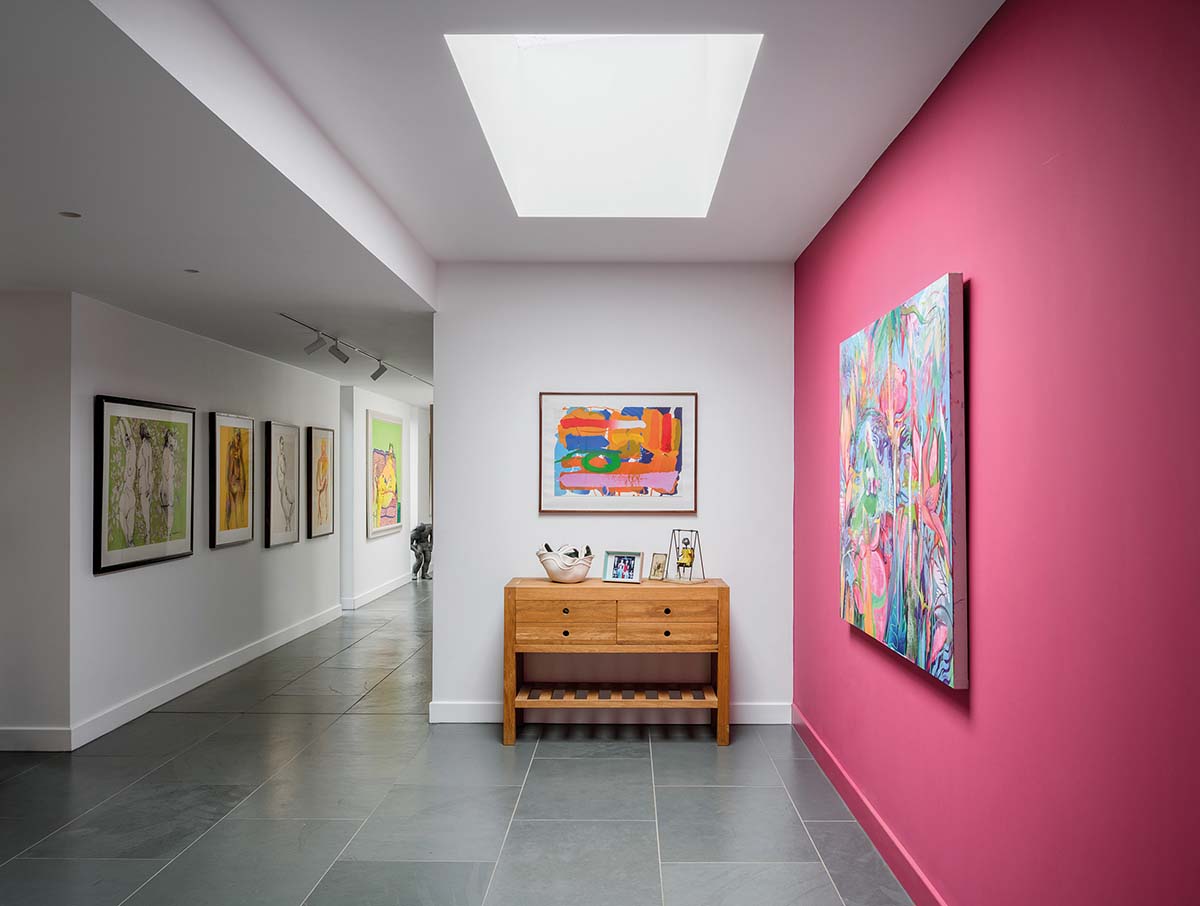
Although she has always been creative, at school Beaton flirted with the idea of becoming a nurse like her mum. She volunteered at Erskine Hospital, where she played dominoes with the elderly ex-servicemen patients. Some were amputees, others recovering from strokes, their hardships etched on lined faces.
“I ended up drawing them, and it was so much fun –they liked the camaraderie of it, and they were great to draw because of their wrinkles,” recalls Beaton. The portraits formed
part of her art school submission folio, and she became known early on for her figurative work and virtuoso draughtsmanship.
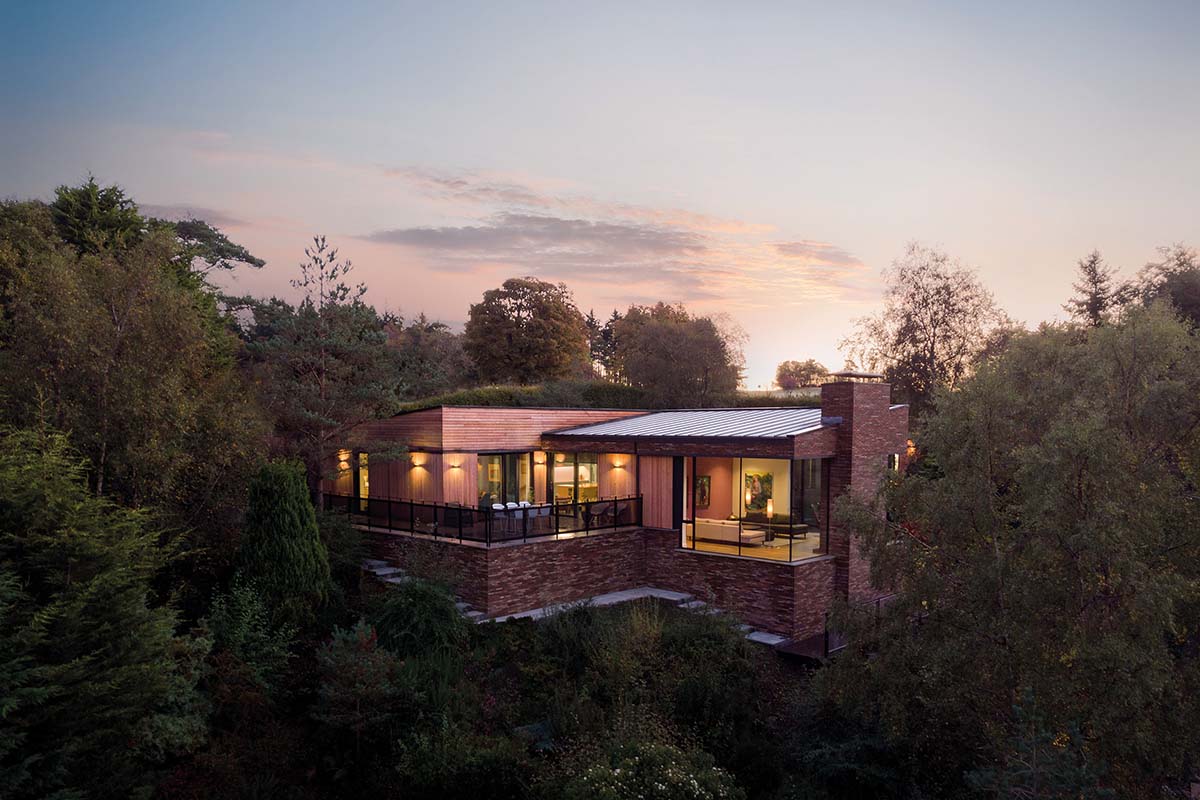
Like her favourite artist, Paula Rego, who died in June at the age of 87, Beaton’s practice is constantly evolving. A book of her work published four years ago reveals the breadth of her oeuvre: lively nudes reminiscent of Egon Schiele; an intricate stained-glass window on Glasgow’s Great George Street Lane; a grass wave sculpture with two steel metal heads, emerging from a meadow of wildflowers in Aberdeen.
“I love the idea of people’s work progressing – it’s exciting to see an artist change and jump about just because they can,” she says. “I’m inspired by people who change it up and don’t stick to a plan.”

Landscapes have been her focus since moving into the Pond House last year. “During lockdown I couldn’t do life drawing, so I’d go for walks with my sketchbook,” she explains. “I like to be immersed in a landscape; for everything to be up close. I’m not drawing what I see, but what I feel while I’m there.”
The beaches of Iona, Lewis and Harris provide endless inspiration, but it’s on the floor of the standalone studio at the back of the house that the real magic happens. “That’s where I’ll put it on a larger canvas and bring in other ideas,” she says.
Often, women lie at the heart of her landscapes. Folklore, myths and legends are sewn into many of her pieces; Greek and Roman goddesses cast an otherworldly lens on the modern
female experience. “I think a lot of my work has been about justice for women,” she says.

When asked to contribute to 400 Women, an exhibition that shone a light on the horrific
femicides in Ciudad Juárez, Mexico, Beaton was given an image to work from of a 19-year-old woman whose body had never been found.
“I imagined this poetic idea of tears, breast milk, everything floating into the soil and re-emerging as these breast mountains, which kept appearing in my work. They represented the dead women who now form part of the landscape.”
In a later work, she painted the young woman as a nymph, grinning mischievously as she bathes in a fountain well. “That was my girl coming back to life,” she smiles.
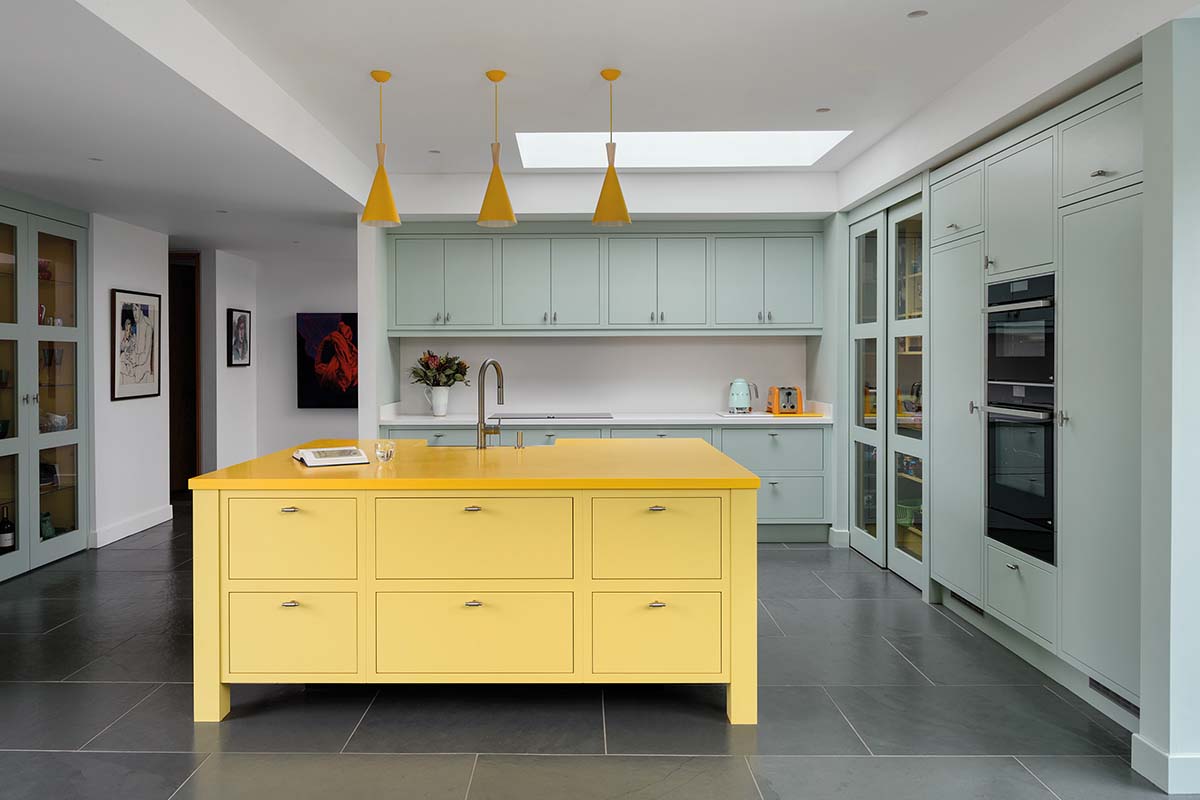
Beaton usually has two or three paintings on the go at once and can work at pace – a skill finessed while raising her four children, Simon, Samantha, Josie and Daisy. “I had to work
really fast when they were young, mostly at night when they were asleep,” she recalls.
“I switched to acrylic paints because they dried faster than oils and weren’t as messy. It’s only recently that I’ve returned to using oils again.”
Through her art, she has charted the many facets of motherhood, from the joyful expectation of pregnancy to the bittersweet wrench of the kids growing up and moving out, as all of hers now have. “It’s a big jolt when that happens,” she reflects. “You go from this chaotic family life to things being just a wee bit quiet.”
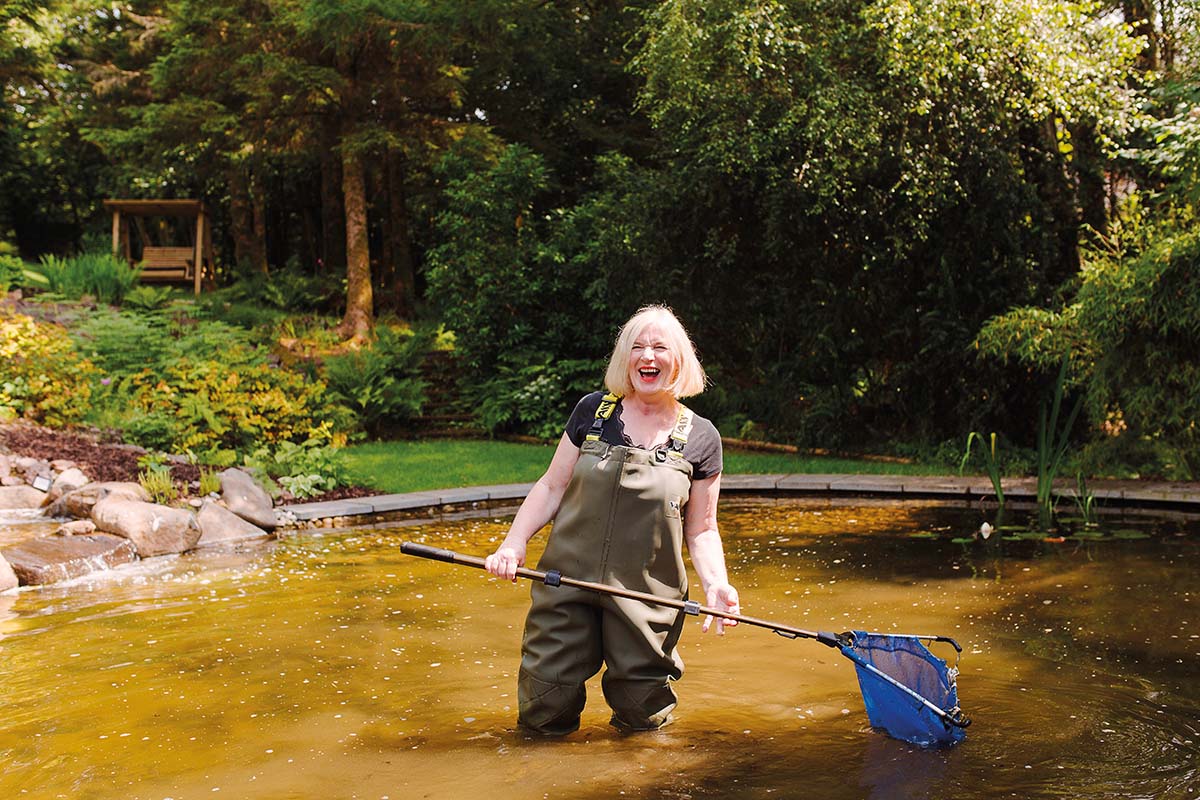

In her new home, though, she has a place where stillness can be savoured. This winter, she will hunker down in the studio to paint for a future exhibition in London. She has a hobby
(“For the first time in my life,” she laughs) in tending to her glorious, sprawling garden, and finds immense satisfaction in cleaning the pond after which the house is named.
“It’s such a cool, lovely place to be – and rather meditative,” she smiles, as she pulls her waders on for a dip. “You just have to seize the happiness in the everyday, don’t you?”


